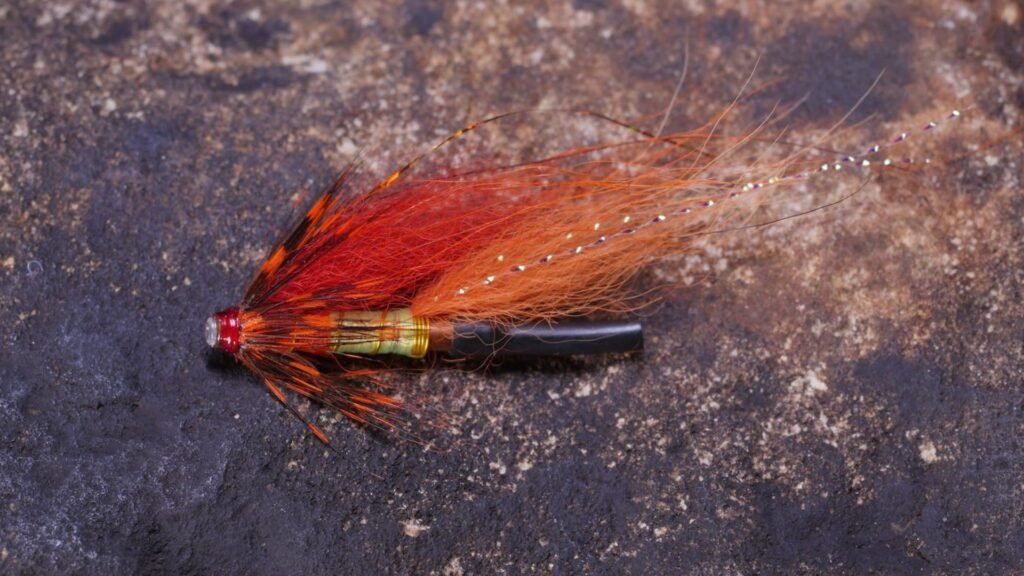Tips for Choosing the Right Salmon Fly
Ah, the salmon fly. A thing of beauty and, hopefully, a ticket to landing the king of the river, the mighty salmon. But with a dazzling array of colors, sizes, and styles to choose from, how do you pick the right salmon fly? Fear not, aspiring salmon anglers! This guide will equip you with the knowledge to confidently select the perfect salmon fly for any situation. So, grab your fly box and get ready to impress those salmon!

Nature’s Guide to Fly Selection
Salmon are notoriously selective eaters, and mimicking their natural prey is key to success. This concept, known as “matching the hatch,” is a great starting point for choosing the right salmon fly:
- Insect Seasonality: Research the insects that salmon feed on during different times of the year. Early spring might see them targeting emerging mayflies, while summer could be all about juicy salmonflies. Match your salmon fly to the dominant insects present in the river.
- Water Conditions: The clarity and flow of the water can influence your fly selection. In clear water, opt for more natural-looking flies with subdued colors. For murky water, brighter colors or flashy patterns can help attract attention.
- Fish Size: Salmon come in a variety of sizes. Match the size of your salmon fly to the size of the salmon you’re targeting. A large, bulky fly might be intimidating for a smaller fish, while a tiny fly might go unnoticed by a big salmon.
Remember: Matching the hatch is a powerful tool for choosing the right salmon fly. By understanding what salmon are naturally eating, you can present a fly that’s irresistible.
Factors to Consider When Choosing a Salmon Fly
While matching the hatch is important, there are other factors to consider when choosing the right salmon fly:
- Water Depth: Salmon can feed at different depths in the water column. Choose a sinking fly if you need to reach deeper areas, or a floating fly if targeting fish near the surface.
- Fishing Technique: Different fishing techniques might require specific fly characteristics. For example, swinging flies often benefit from a more weighted design for better control.
- Personal Preference: Don’t be afraid to experiment! While classic patterns have proven effective, there’s always room for trying something new. Observe what other anglers are using and see what works for you.
Remember: Matching the hatch is a starting point, but there are other factors to consider when choosing the right salmon fly. Think about water depth, fishing technique, and even your own preferences to select the perfect fly for the situation.
Understanding Salmon Fly Features
Now that you know what to look for, let’s explore the different features of salmon flies:
- Size and Weight: Salmon flies come in a range of sizes, typically from size 2/0 all the way down to size 8. The weight of the fly will depend on the depth you need it to reach and the casting technique you’re using.
- Body Materials: Common body materials include synthetic dubbing, natural fur and feathers, and even metal tubes. The choice of material can affect the fly’s buoyancy, weight, and overall appearance.
- Wing and Hackle: The wings and hackle of a salmon fly add color, movement, and realism. Feathers from birds like turkey, mallard, and even synthetic materials are commonly used.
Remember: Understanding the different features of salmon flies will allow you to make informed decisions when choosing the right fly for your fishing adventure.
Conclusion
Choosing the right salmon fly isn’t an exact science, but with a little knowledge and practice, you’ll be well on your way to success. Remember, there’s no single “magic fly” that guarantees a catch. The key is to experiment, observe the water conditions, and adapt your fly selection accordingly. With a well-stocked fly box and the knowledge to choose the right salmon fly, you’ll be one step closer to experiencing the thrill of battling a magnificent salmon! So, tie on your favorite fly, cast with confidence, and enjoy the beauty of salmon fishing!


